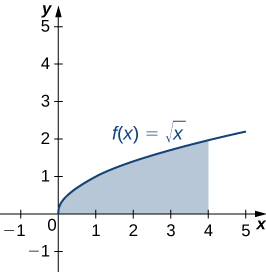| << Chapter < Page | Chapter >> Page > |
Next, we need to find the total mass of the rectangle. Let represent the density of the lamina (note that is a constant). In this case, is expressed in terms of mass per unit area. Thus, to find the total mass of the rectangle, we multiply the area of the rectangle by Then, the mass of the rectangle is given by
To get the approximate mass of the lamina, we add the masses of all the rectangles to get
This is a Riemann sum. Taking the limit as gives the exact mass of the lamina:
Next, we calculate the moment of the lamina with respect to the x -axis. Returning to the representative rectangle, recall its center of mass is Recall also that treating the rectangle as if it is a point mass located at the center of mass does not change the moment. Thus, the moment of the rectangle with respect to the x -axis is given by the mass of the rectangle, multiplied by the distance from the center of mass to the x -axis: Therefore, the moment with respect to the x -axis of the rectangle is Adding the moments of the rectangles and taking the limit of the resulting Riemann sum, we see that the moment of the lamina with respect to the x -axis is
We derive the moment with respect to the y -axis similarly, noting that the distance from the center of mass of the rectangle to the y -axis is Then the moment of the lamina with respect to the y -axis is given by
We find the coordinates of the center of mass by dividing the moments by the total mass to give If we look closely at the expressions for we notice that the constant cancels out when and are calculated.
We summarize these findings in the following theorem.
Let R denote a region bounded above by the graph of a continuous function below by the x -axis, and on the left and right by the lines and respectively. Let denote the density of the associated lamina. Then we can make the following statements:
In the next example, we use this theorem to find the center of mass of a lamina.
Let R be the region bounded above by the graph of the function and below by the x -axis over the interval Find the centroid of the region.
The region is depicted in the following figure.

Since we are only asked for the centroid of the region, rather than the mass or moments of the associated lamina, we know the density constant cancels out of the calculations eventually. Therefore, for the sake of convenience, let’s assume
First, we need to calculate the total mass:
Next, we compute the moments:
and
Thus, we have
The centroid of the region is

Notification Switch
Would you like to follow the 'Calculus volume 1' conversation and receive update notifications?